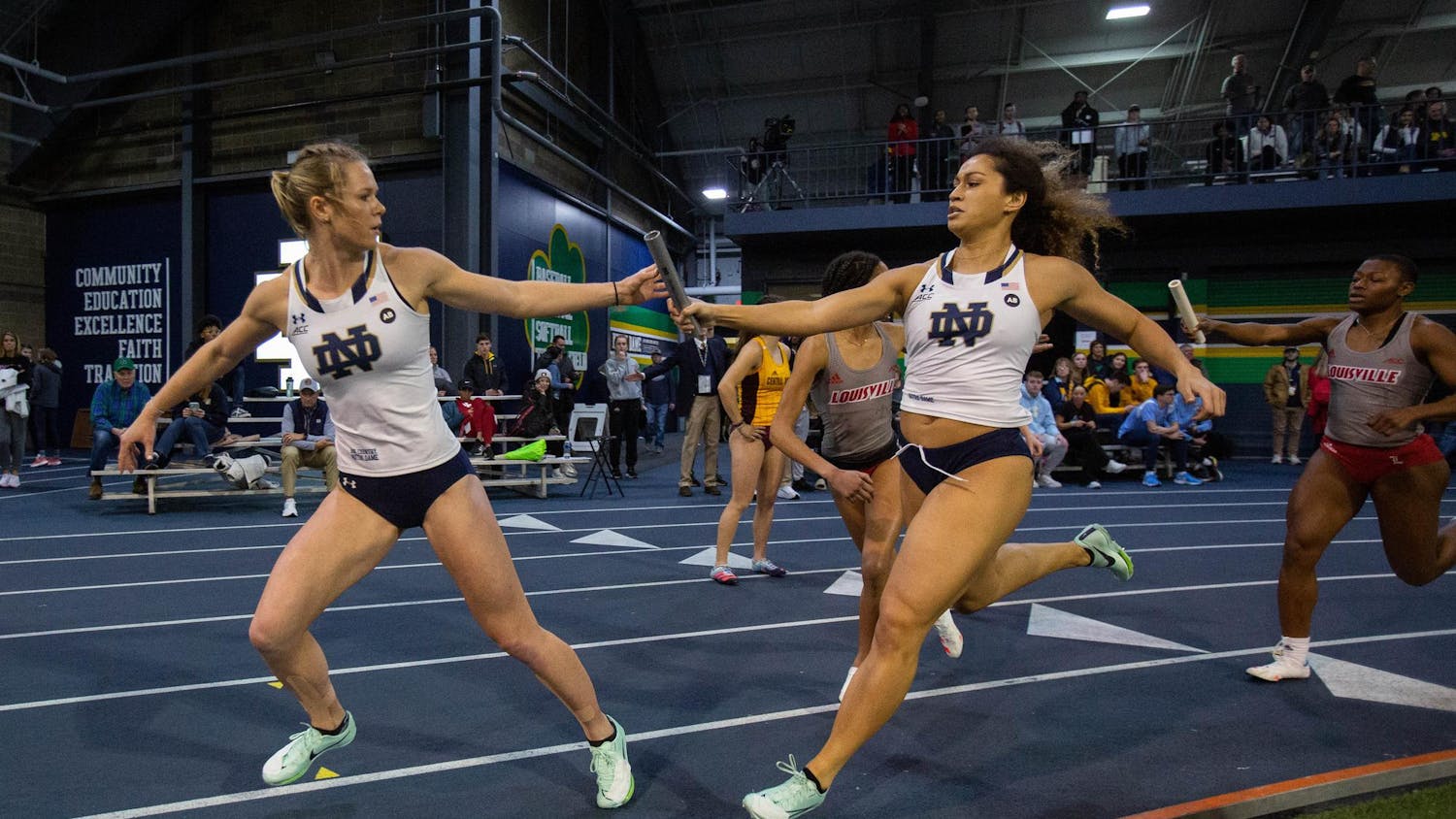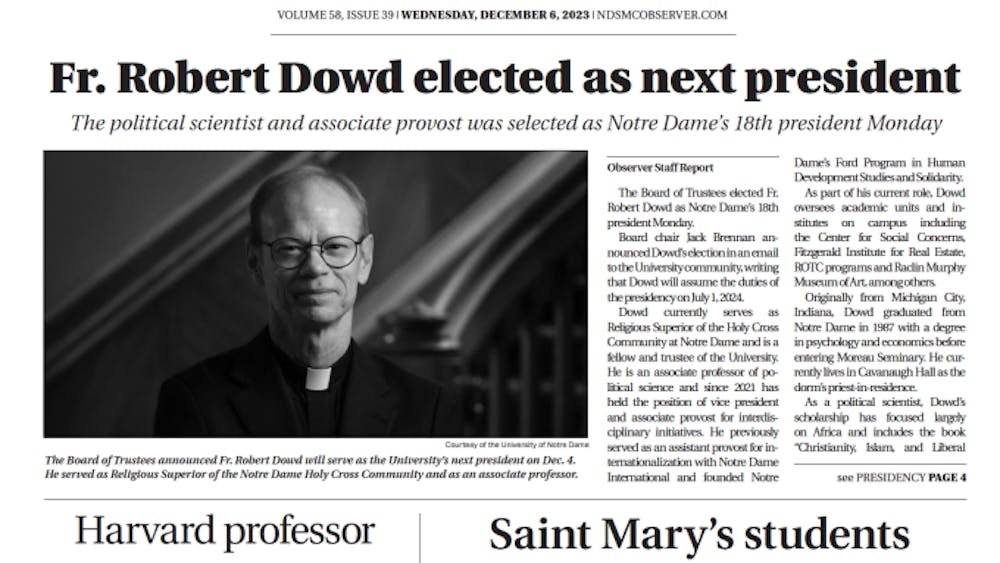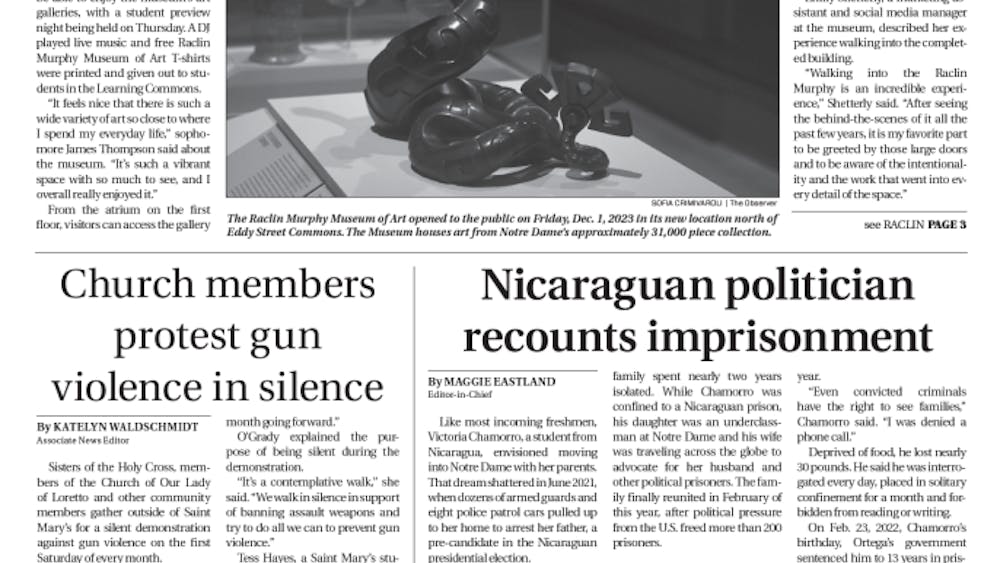Editor's Note: This is the second article in a three-part series examining activism at Notre Dame: its current role on campus, how that role has changed and what those changes mean for the future.
As is the case with universities nationwide, activism at Notre Dame has redefined itself as an effort to steer the boat in a certain direction, rather than rocking it.
Many college students of the late 1960s and early 1970s turned to sit-ins, lie-ins and stone-throwings to get their point across, including those at Notre Dame - until then-University President Father Theodore Hesburgh told them, "Enough."
He established guidelines for protestors, allowing their voices to be heard while prohibiting any infringement upon other students' rights. Violent protests stopped and other universities attempted similar efforts.
While the heated, excited activism of the 1970s has subsided nationwide, there still remains a stereotype that Notre Dame lacks passionate protesting.
Is the climate today an extension of Hesburgh's influence, where the University's readiness to discuss problems makes activism unnecessary - and therefore somewhat invisible - at Notre Dame? Does today's lack of loud protest stem from apathy? Or is activism simply not what it used to be?
"Tough Times"
When the possibility of a war in Vietnam came to light, college students from Berkeley to Columbia staged violent protests, taking their anger against the U.S. government out on ROTC buildings, CIA recruiters and their university presidents - who, they claimed, were hiding behind closed doors and not listening to them.
At Columbia, students took over President Grayson Kirk's office, where they rummaged through his files, drank, smoked cigars and defecated on his rug. After a confrontation with protestors, Swarthmore College President Courtney Smith had a heart attack in his office and died.
"Whereas here, I was up there in my office [in Main Building] every night after supper," Hesburgh said Tuesday. "The lights were all on, the door was open. Anybody who wanted to could knock on the door and come in, and I had groups of students all night long coming in and out.
"We had some good discussions, and we even saved a lot of problems because of that."
Still, there was a thriving anti-war movement at Notre Dame, said Michael Shaughnessy, a theology teacher at St. Ignatius College Prepatory High School in San Francisco who graduated from Notre Dame in 1971. Sit-ins, lie-ins and student strikes were common occurrences, he said, especially during the 1969-70 school year.
As Hesburgh wrote in his autobiography "God, Country, Notre Dame," students were threatening to torch the ROTC building (the former security building behind Lyons Hall). A mob also interrupted a Board of Trustees meeting, demanding to speak to a trustee - and when the long-time black civil rights activist Bayard Rustin, then a trustee, went out to greet them, they insulted him.
"I was in favor of the right to protest, but not when the protest interfered with the right of students being able to attend their classes or administrators being unable to get into their offices," Hesburgh wrote in his book.
The 15-Minute Rule
So Hesburgh wrote a letter which he sent out to students while they were home for Easter Break, knowing their parents would read it, too. The letter outlined what was eventually dubbed the "15-Minute Rule": Students could protest, but when they were asked to stop, they had 15 minutes to cease and desist before they were suspended for the semester. Were the students to continue for an additional five minutes, they would be expelled.
The letter, Hesburgh recalls, was reprinted in full in the New York Times, the Washington Post and the Christian Science-Monitor, and was met with positive feedback from the Notre Dame community.
"Still, I knew it would be tested and of course, it was," Hesburgh said. On a day when recruiters from the CIA and Dow Chemical were scheduled to visit the Placement Office (now the Career Center), about 12 students laid in front of the door to that office.
The dean soon arrived and gave them 15 minutes to move - they didn't. He suspended them, and they rose before the remaining five minutes and thus were not permanently expelled. Then, they headed straight for Hesburgh's office and asked him to rethink the suspension.
"I said, 'Hey guys, you're toothless tigers. You want to protest, you take the consequences. Now I told you that if you didn't obey the dean of men when he told you, you'd be suspended," Hesburgh said. "You've had your fun, but now you have to get out of here.'"
And students accepted their share of responsibility.
"It sort of balanced both sides," said Andy Dotterweich, also a 1971 graduate, of the 15-Minute Rule. "It let people express themselves, but it stopped the disruption of the campus."
"New" activism
So, Notre Dame saw its fair share of protests as Vietnam was getting underway, but as Dotterweich can attest, normal life went on at the time. He continued to attend all his classes throughout the protest.
"The anti-war movement always knew that it was a minority at Notre Dame," Shaughnessy said. "Notre Dame is a school of privilege."
Just like back then, loud protests today are rare occurrences, but when it comes to charity, "There is probably a similar amount, maybe even more now, of kids involved in service work," said Shaughnessy, who teaches a moral theology/social justice course at St. Ignatius. "I'm not sure there's as much advocacy work, working to change social structures."
But Dotterweich disagreed, citing the Notre Dame Right to Life group as an example of "new" activism.
"A group goes to Washington and stands up for life is practicing activism, and a very positive [type of activism]," he said. "I've seen in pictures the large white crosses they put out on the campus at times. They're trying to help people understand the horror of abortion. It's a different type of activism, but it's a much more productive one than what went on back in the late '60s and '70s."









